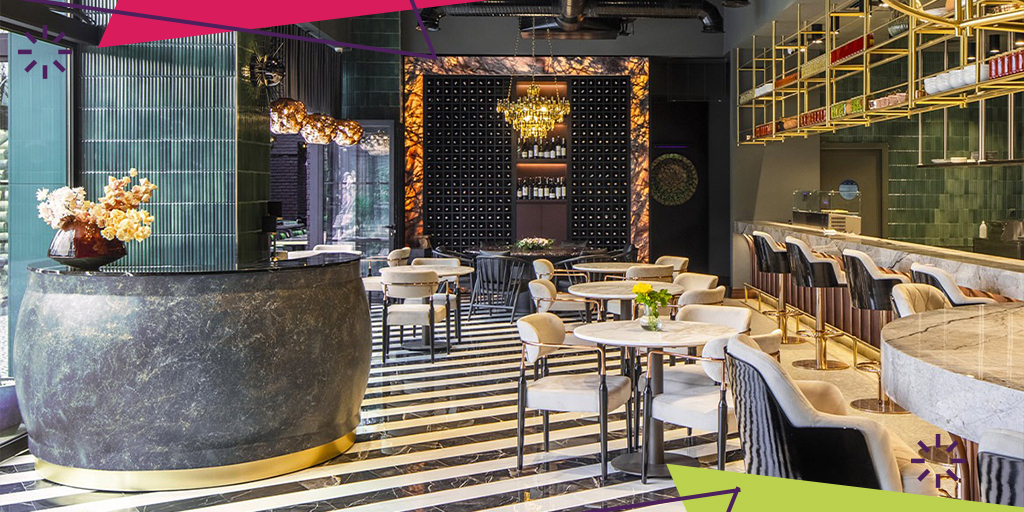Restaurant Organizational Structure
The organizational structure of a restaurant is one of the key components for ensuring efficient and smooth operations. By clearly defining roles and responsibilities, it helps maintain high standards of quality and service. In this article, we explore the concept of restaurant organizational structures, their types, and features that contribute to building a well-organized and effective workplace.
Common Types of Restaurant Organizational Structures
1. Hierarchical Structure:
- Features a traditional top-down chain of command, starting with the General Manager at the top, followed by the Operations Manager, then supervisors of individual departments.
2. Functional Structure:
- Each department operates independently based on its specialty—such as the kitchen, marketing, or finance—with coordinated efforts to meet common goals.
3. Team-Based Structure:
- Employees are grouped into small teams responsible for specific functions like the kitchen team, hospitality team, or marketing team. These teams enjoy a degree of autonomy in decision-making.
4. Technology-Driven Structure:
- Integrates technology into order management, service delivery, and interdepartmental communication, fostering a faster and more efficient work environment.
5. Flexible Management Structure:
- Ideal for restaurants that need to quickly adapt to market changes. Responsibilities are assigned based on immediate needs rather than fixed hierarchies.
Key Departments in a Restaurant Organizational Structure
1. General Management:
- Includes the General Manager and branch managers. Oversees strategic planning and day-to-day operations.
2. Operations Management:
- Monitors overall performance, ensures quality control, and manages operational costs.
3. Kitchen:
- Comprises chefs and kitchen assistants, responsible for food preparation and upholding culinary standards.
4. Service and Hospitality:
- Encompasses servers, hosts, and customer experience supervisors, ensuring top-notch guest service.
5. Marketing and Sales:
- Handles promotions, advertising campaigns, and customer relationship management.
6. Finance and Accounting:
- Manages budgeting, revenue tracking, and expense control to maintain financial stability.
7. Human Resources:
- Responsible for recruitment, training, and maintaining a positive work environment.
8. Supply and Inventory:
- Oversees purchasing, storage, and availability of essential food supplies and ingredients.
Factors Influencing the Organizational Structure
- Restaurant Type and Tier: Fine dining establishments with diverse services require more complex structures than small or casual restaurants.
- Restaurant Size: Larger restaurants or those with multiple branches need more detailed structures with multiple departments.
- Independence or Hotel Affiliation: Independent restaurants often enjoy more management flexibility, while those attached to hotels follow the hotel’s administrative framework.
- Target Audience: Restaurants catering to specific groups like families or business professionals may need tailored management models.
- Geographic Spread: Chains operating in various locations require more sophisticated structures to manage operations across sites.
- Technology Use: Greater reliance on smart systems and digital ordering requires organizational structures that support tech integration.
- Management System (Centralized vs. Decentralized): Centralized restaurants have clearer lines of authority, while decentralized ones distribute tasks more broadly.
Key Characteristics of an Effective Restaurant Structure
- Clarity: Clearly defined roles and responsibilities reduce confusion and enhance efficiency.
- Effective Communication: Open lines of communication between staff and management help resolve issues and improve decision-making.
- Flexibility and Adaptability: The ability to adjust to market shifts and customer needs ensures long-term success.
In summary, choosing the right organizational model isn’t just an administrative task—it’s a strategic decision that directly impacts the restaurant’s long-term success. Combining strategic planning with operational flexibility is the key to building a restaurant that can thrive in today’s competitive market.






